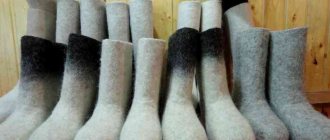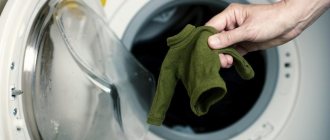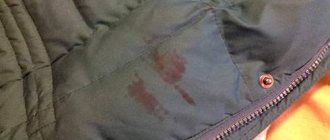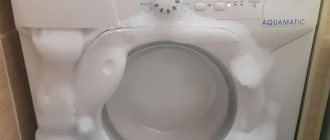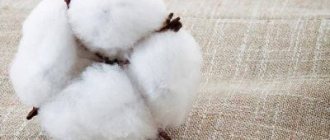The so-called “military uniform” includes both police uniforms and camouflage with office clothes. All these products are sewn from dense materials and require a special approach. If not cleaned correctly, such items fade and shrink, which makes them unsuitable for further wear and forces you to shell out money for a new set. In order not to spoil things in vain, you should figure out how to wash military uniforms in a washing machine. We study the information on the label and take note of specific recommendations.
Colored sneakers for spring 2020: a fashionable hit to replace boring classics
A jacket, like a down jacket, is not the easiest thing to wash in a washing machine. The fact is that the jacket can be made of various materials, have padding polyester filling or consist of a membrane.
These and other characteristics influence the choice of machine washing conditions and drying rules.
To wash your jacket yourself and not spoil its appearance, be sure to follow proven recommendations and do not forget to look at the care icons on the item that are printed on the factory label.
How to wash a police uniform?
The wash itself will be machine washable. But before this, the form must be properly soaked. This is a very important point. Dyes often require additional fixation. However, if there was a defect in production, then no amount of pre-soaking will help.
Soaking stage:
- It is necessary to prepare an aqueous solution of vinegar. One glass of acid requires 10 liters of water. Under no circumstances should the resulting mixture be heated. Let the water be cool.
- The clothes are soaked in the basin for about 20 minutes. If the product is not defective, the colors will become several tones brighter.
- After this, the uniform must be thoroughly rinsed in cool water. You can move on to the next stage.
How to properly wash a winter jacket in a washing machine
- First, find out what the jacket you are going to wash in the washing machine is made of and what is filled with it.
- Products made from padding polyester can be washed perfectly in an automatic washing machine on the synthetic fabric cycle. The water temperature of such a wash should not be higher than 40 degrees.
- Jackets with down filling should be washed separately from other items to prevent the down from matting inside. For down jackets, a delicate machine wash cycle at a temperature of no more than 30 degrees is suitable.
- But jackets made of membrane fabric cannot be machine washed. They are only suitable for hand washing. It is advisable to use a special detergent so as not to damage the membrane jacket.
- It is not recommended to wash leather jackets yourself; it is better to clean them using dry methods or take them to dry cleaning.
- Polyester jackets must be washed on the cycle indicated on the label of the specific product. If there are no special icons, choose a delicate machine wash cycle with a spin speed of no more than 600 rpm. Add fabric softener to prevent the jacket from becoming electrified after it dries.
Caring for your camouflage uniform
Military uniforms get dirty faster and more seriously. As a rule, you have to deal with persistent “field” pollution: grass, blood, oil and soil . You can deal with such stains only by pre-soaking. To fully clean the camouflage, we proceed as follows.
- Prepare a solution from water and vinegar, adding detergent to it.
- We lower the uniform into the finished composition and keep it there for 30-40 minutes.
- Wash heavy stains separately. Place the item in the bath, add gel or powder, foam and scrub the contaminated areas with a soft brush. It is advisable to use liquid compositions, since dry mixtures dissolve less well, become clogged with fibers and are poorly washed out of the material.
- Rinse thoroughly and put it in the washing machine.
If the camouflage has stains from grass, blood or oil, then pre-soaking and washing is necessary.
After double soaking, the camouflage will be brighter, will get rid of the unpleasant odor, and the fabric itself will become softer. Air conditioning wouldn't hurt either, although it's better for military personnel to use neutral scents so as not to stand out. As for setting up the machine, everything is according to the standard: the water temperature is about 40 degrees, and the spin speed is 800-1000 revolutions.
How to properly wash a winter jacket in a washing machine
- It is important to choose the correct water temperature for washing. The symbols on the label will help with this. For example, if a triangle with two intersecting lines is depicted, this means that machine washing is prohibited. This jacket must be washed by hand.
- The optimal temperature for washing a jacket is 30-40 degrees. At higher temperatures there is a risk of deforming the product. In addition, a jacket, especially a new one, can fade in hot water.
- To prevent the jacket from losing its shape, it is best to wash it in a laundry bag.
- Before putting your jacket into the drum of the washing machine, carefully check the pockets to ensure that there are no small parts, chewing gum or anything that could stain the item.
- Before washing, fasten all the zippers on the jacket, unfasten the collar and hood with buttons, fur and decorative details. Turn the jacket inside out.
- The extra rinse function will prevent streaks from appearing on the material and protect the jacket from staining or losing color.
- For machine washing, it is better to use liquid detergents rather than powder: they are easier to wash off and provide the jacket with gentle care. Instead of conditioner or gel, you can use regular hair shampoo with rich foam.
- The spin mode is usually indicated on the product label. The spin prohibition is indicated by a square with three vertical stripes. In this case, the jacket can be wrung out and twisted only by hand.
- To prevent the filling inside the jacket from rolling up, use soft tennis balls or special magnetic balls for machine washing.
- You should not soak your jacket for a long time before washing: this can lead to streaks, and too much liquid is harmful to the synthetic padding or down filling.
- Pre-wash difficult stains on the jacket by hand using a slurry of laundry soap, stain remover, or wipe with a cloth soaked in an alcohol solution.
Civil servant uniform
For office workers, clothing is not designed for field conditions, so it is made from more delicate fabrics. Unlike police and camouflage uniforms, it shrinks easily and shrinks in size, so it is important to control the heating temperature of the water. It is also necessary to take into account the following nuances:
- It is better to choose the “Delicate” program;
- water heating should be within 30-40 degrees;
- Chlorine-based bleaches are prohibited;
- turn on an additional rinse to completely clean the fibers from detergents;
- We reduce the spin to a minimum, since strong acceleration of the drum has a negative effect on the fabric.
The uniform of civil servants is made mainly from delicate fabrics - wool and astrakhan fur.
Automatic spinning is not suitable for delicate fabrics. It is safer to skip the spin cycle and carefully squeeze the mold by hand, not twisting it, but gently pressing it. Another option is to hang the “office” over the bathtub and use your palms to remove moisture from the material. Dry clothes only on a hanger and in a ventilated area.
Rules for washing workwear
The operation of one set usually allows for 20 washes. However, for this it is important to ensure proper care of things.
General rules for washing workwear:
- Read the instructions on the label before washing your robe. The proper temperature is indicated there. Copy the information from the shortcut into a notepad or phone notes. This way the rule will be at hand if the label wears off or comes off.
- Determine the material of the uniform and select the type of chemistry.
- Consider the nature of the stains - sometimes a work suit needs to be soaked before washing.
- Cleaning is carried out at temperatures from +60 to +100 degrees. If you wash protective suits at high temperatures, you can intensively clean the fabric. But this option is not suitable for all fibers. The recommended temperature is indicated on the label.
Following the rules allows you to avoid unacceptable mistakes. If a robe made of cotton fabric is very dirty, it is soaked in water with powder, and only then washed by hand or in a machine.
How to read labels
The tag provides invaluable guidelines that should be applied when caring for the fabric.
Label indications:
- Circle - it is recommended not to wash, but to dry clean.
- “A” in a circle – it is allowed to remove stains in any solution.
- “P” in a circle – clothing requires the abandonment of chemicals with trichlorethylene;
- “F” in a circle – you can use petroleum products to clean the fabric.
If you comply with each requirement, things will retain their properties and appearance longer.
How to wash cotton items
Work clothes for non-aggressive conditions are sewn from material based on plant fibers. Before washing cotton shirts and trousers, soak them in warm water for several hours. For deep stains (oil, blood, dirt), use a soda solution in which the clothes are boiled. After boiling, it is necessary to rinse the robe. Another option among special products is contactol. It also removes stains from the robe when boiled. Then things can be washed by hand or loaded into a washing machine.
How to soak things
Things can be left in a warm soapy solution for 3 hours. For deep stains, scrub the stained areas with a brush.
Bleach removes traces of paint. Oil products remove grease stains. Use these products before washing your robe.
How to choose a mode in a washing machine?
If you do not plan to wash your robe by hand, soak it first. Then select normal mode and set the cycle duration depending on the depth of contamination. It is advisable to wash the robe with the addition of a stain remover.
How to iron a jacket correctly?
It is necessary to iron the collar from the wrong side, that is, the one with which the collar is adjacent to the jacket; fold back the collar and run the iron over it; When ironing, use steam as much as possible; When the collar itself is ironed, fold it back and iron the fold.
Interesting materials:
How much does a Kommunalka cost in a 1-room apartment in Moscow? How long should white milk mushrooms be soaked before salting? How long to soak over-salted herring? How long to soak the Podgrudki? How long does it take to evaporate 200 ml of whiskey? How much does a bottle of dry white wine cost? How long should you beat the whites in a blender? How many WMIDs can you create in WebMoney? How many prisoners are there in Belarus? How long does it take to level up WoW shadowlands?
Selecting detergents
To maximize the removal of contaminants, it is necessary to choose the right product for home washing of dirty workwear.
The modern chemical industry is ready to present many different products that allow you to remove any stains.
The most gentle way is to soak and wash clothes using ordinary laundry soap, possibly with the addition of soda.
To remove more stubborn stains, you can use active alkalis, such as sodium, but you need to use it very carefully and in small concentrations, otherwise you can damage the fabric structure.
How often to wash workwear
There are a number of decrees of the Ministry of Labor regulating the process of providing, cleaning, and replacing workwear at enterprises in various industries.
These documents stipulate that the final schedule for washing work clothes is developed and approved by internal regulations of the enterprise management, according to working conditions and the intensity of pollution.
- In general, regulations recommend washing workwear once every 10 days for moderate soiling, and once every 6 days for heavy soiling.
- For working uniforms of workers in the livestock sector and areas related to sewerage work, it is recommended to clean work clothes once every three days.
- Food workers' clothes are washed daily.
Important! During the procedure, the employee must be provided with a change of clothes.
SanPiN and home washing
According to sanitary rules and regulations, some types of work overalls and trousers are allowed to be washed only in specialized laundries.
This is due to the fact that some types of fabrics are impregnated with special protective solutions that allow the workwear to withstand extremely high or low temperatures.
Home washing of workwear made from such fabrics can deprive them of their protective layer and, as a result, cause injury to an employee whose work clothes have lost their main properties.
Washing in laundries and dry cleaning of workwear made from protective fabric should be carried out with subsequent restoration of the protective layer.
It is also prohibited to wash at home the work clothes of employees whose professional activities involve direct interaction with chemicals or toxic substances.
Such protective clothing must be pre-disinfected.
Attention! It is recommended to pre-ventilate the overalls of employees dealing with fuel and lubricants for several hours.
What is a delicate wash cycle?
Delicate washing is not only the gentle washing of items made from thin fabrics, but also an individual approach to them (this is especially required for wool and silk). ... Delicate fabrics include wool and silk, nylon, polyester, lace, cambric, cashmere, knitwear, microfiber, lace.
Interesting materials:
Where does the word flap come from? Where did the word Udmurt come from? Where did the word bear come from? Where did the word understood come from? Where did the word volunteer come from? Why did Lena Bessoltseva’s classmates immediately come up with the nickname scarecrow? What does this word mean? Why are there many borrowed words in the Russian language? Why can't you say the word "Infuriate"? How many words do you need to write the final essay? How many times do you need to repeat a word to learn it?
So, let’s summarize how to properly wash VKBO:
The condition of the fabric and paint color is greatly influenced by the human body itself. Since approximately 30% of the human body's metabolism occurs through the skin, primarily through the sweat produced by your body. The composition of sweat is somewhat similar to urine, which contains ammonia and other chemically active substances. Their concentration directly depends on what you eat and drink. Sweat causes maximum damage to items with a high cotton content (from 30-35% to 100% cotton). For example, any anti-encephalitis or mountain suits made of tent fabric (in the ESR “Nine” range), mountain suit Gorka-3, KSU, camouflage suit Fighter. Products made from synthetic fibers (where the product contains less than 30-35% cotton fibers), for example, England camouflage suits, Gorka “Profi”, Commander, Specialist, wear out less. This affects not only the appearance of the product, but also its strength. If you want to preserve the product for as long as possible, wash it in a timely manner or at least rinse it.
- If a product soaked in sweat is not washed in a timely manner, or at least not rinsed, the FABRIC FIBERS AND DYES START TO DESTROY.
- When using the products, when you crawl in them or simply move through tall, dense grass or through bushes (dry or wet), mechanical stress is applied to the products, comparable to the impact of sandpaper. That is, the PAINT IS WIPED OFF and, unnoticed by you, the FIBERS OF THE FABRIC ITSELF ARE DESTROYED.
- The composition of the water in which you wash VKBO, the type of washing machine and washing powder or soap (for hand washing), as well as the contamination of the item itself. The use of any rinse aids in addition to powder is at your discretion. If there is sand, dirt, or some kind of soil left on things, you must first wash it off under running water, and only then wash the product. If this dirt is left, then
Is it possible to wash a jacket in a machine or by hand?
Usually military uniforms are not washed, but some housewives have adapted to carry out the operation without problems. The first thing you need to do is take your time and carefully study the composition of the fabric.
If the jacket is made of natural wool and with fur inserts, then it is better not to risk it and take it to the dry cleaner. When washed, the material is easily deformed, shrinks, and is very difficult to iron. The wool will have to be steamed through wet gauze, and this is extremely difficult on a jacket.
If the composition contains synthetic fibers, then machine washable on a delicate cycle with pre-soaking is acceptable.
Our tips on how to wash camouflage:
Wash your military uniform in the right conditions
First, determine what kind of washing machine you have . In Malyutka type machines, washing occurs due to a disk with ribs rotating inside. Such a machine, due to its design, exerts mechanical friction on the suit. As a result, the paint and fibers of the fabric in the folds can rub off very quickly. To prevent this from happening, you need to soak and rinse the suit before washing . This will remove sand and dirt that cause unnecessary friction.
If you have a modern machine, but you see that there is sand, dirt, and traces of soil left on your things, be sure to wash them off first under running water. If this dirt is left, then even if the washing machine is not fully loaded, it will have a “sandy” effect on things for some time.
Secondly, wash your military uniform in the correct cycle . Washing temperature for tent fabric: 30 degrees (delicate mode is desirable), camouflage: 40 degrees. Set the spin speed to 800-1000 rpm.
Thirdly, water . At water intake and treatment plants, chemically active disinfectants (for example: based on chlorine) and coagulants (for example: based on aluminum) are added to the water, which “glue together” the smallest organic impurities and ensure their precipitation.
- Aluminum chloride is used as a catalyst in organic synthesis, wastewater treatment and wood processing.
- Aluminum sulfate is a coagulant for the treatment of drinking and industrial waters, used in the production of paper and in the textile industry.
More details here: https://www.rusfilter.ru/support/info/razlichnye-tipy-zagrjaznenii-i-metody-ochistki-chast-1/
The increase in the amount of “chemicals” is seasonal and weather-related: in the spring, when the snow melts and melted streams wash dirt from the banks into the water, during prolonged rains (the same thing), as well as during the “drought” period when the water begins to “ bloom” and biological pollution increases significantly.
In this case, the use of even soft powders will definitely lead to rapid fading of the paints, since the water itself can already be compared to a “bleaching liquid”. This can only be combated by installing special filters in the home water supply system.
Let's repeat with the photo of the problem:
An example of damage to things due to an excess of “chemicals” in the water supply system. The result of washing a completely new VKBO.
Also, if you have hard water with a lot of impurities, then (dry) crystalline washing powder in such water dissolves less well than in normal water and may not be completely rinsed out during the washing process. As a result, after washing, a white coating will form on the drum and items. In this case: rinse the camouflage suit additionally. If this is not done, the remnants of unrinsed powder, when wearing the product, will come into contact with the skin of your body, and this can lead to irritation (rash) or, in the worst case, intoxication of the entire body (comparable to poisoning by combustion products, for example: “ carbon monoxide").


